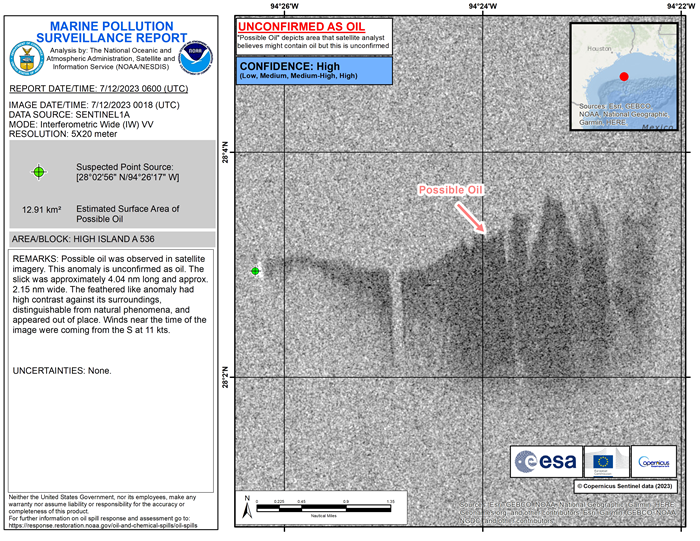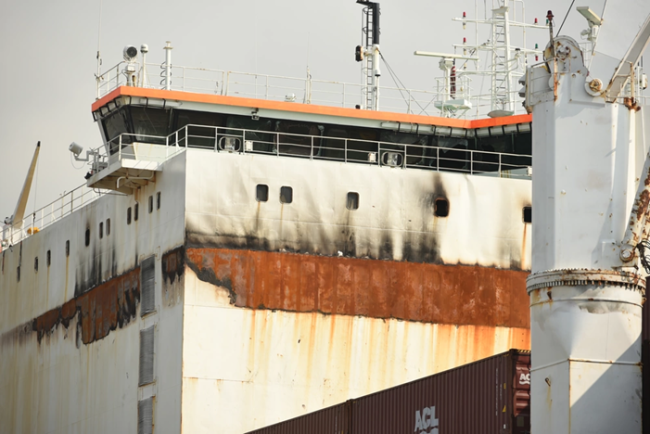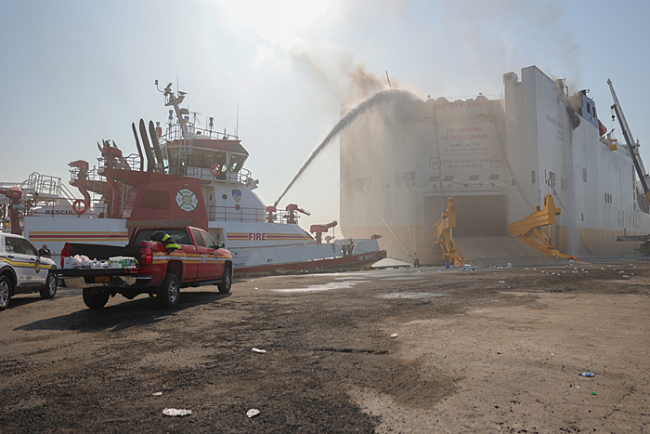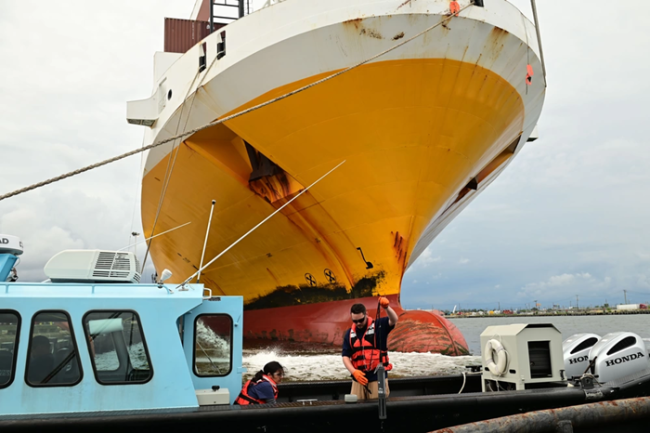Every month, OR&R’s Emergency Response Division provides scientific expertise and services to the U.S. Coast Guard, ranging from running oil spill trajectories to estimate where a spill may spread; to identifying possible effects on wildlife and fisheries; to estimating how long oil may stay in the environment. We also get requests to track and model other floating objects, such as log booms or shipping containers that have broken free, whale carcasses, fish die-offs, and algal blooms.
So far this year, OR&R has provided support for 96 incidents. During July 2023, OR&R provided response support for 21 incidents, including 17 new incidents in seven different states and one international incident (a fire at an offshore production well in Mexico).
The 17 new incidents included 14 oil spills, one potential oil spill (a car carrier in New Jersey that caught fire but did not spill oil), and three chemical incidents. Three of the oil spills were mystery spills—incidents where a substantial sheen or slick was observed with no clear responsible party. The chemical incidents involved the release of asbestos from a warehouse fire, lithium batteries, and other hazmat from two different ship fires.
OR&R staff prepared 100 new incident reports and documents, including two fate and trajectory analyses. Cumulatively, these incidents posed an approximate risk of more than 2,000 gallons of oil and an unknown amount of chemicals.
(Note: All spill volumes are approximate and based on initial information that may be updated after further investigation.)
Here are some of July’s notable incidents:
Spill of Organic Waste Mixture into Ninemile Creek, Bratenahl, OH

On July 15, 2023, an unknown quantity of organic waste mixture was discharged to Ninemile Creek in Bratenahl, Ohio. At the time of the report, the composition of the waste had not been determined. The creek had an opaque, suspended milkiness observed from the Collinwood BioEnergy facility to Lakeshore Blvd, and a fish kill was reported in the creek. As an inland spill, the Environmental Protection Agency (EPA) served as the Federal On-Scene Coordinator (FOSC).
U.S. Coast Guard Marine Safety Unit Cleveland deployed, along with representatives from the responsible party, Ohio EPA, Ohio Department of Natural Resources (OH DNR), Northeast Ohio Regional Sewer District, and teams began oxygenating the water.
The NOAA scientific support coordinator identified threatened and endangered species that could be impacted, and advised against booming the creek, since the contaminant was suspended in the water column. OH DNR did not observe the identified threatened or endangered species in the creek. No further assistance was requested from NOAA.
Satellite Reports Detect Mystery Sheen in High Island Area 536, offshore Texas
On July 12, 2023, NOAA's scientific support coordinator in Texas received three Marine Pollution Surveillance Reports (MPSRs) for High Island Area 536, generated by NOAA's National Environmental Satellite, Data, and Information Service (NESDIS).
All the reports were referred to the National Response Center, which is the designated federal point of contact for reporting oil, chemical, and other discharges into the environment. All three reports were high-confidence that oil was observed, and all were near an offshore oil production platform. A third-party overflight conducted during the same time period reported a two-mile by 20-foot sheen of unknown origin in the same area.
The overflight report described the sheen as rainbow, which is relatively thin and often dissipates.

The NESDIS anticipated that additional data could be available from another satellite pass on July 13. That satellite pass showed no further anomaly from the High Island location, under cloud-free conditions. The NESDIS MPSR program will continue its 24 hours a day, seven days a week, 365 days a year monitoring and analysis of ocean surfaces to assist OR&R in detecting any further sheens or suspected discharges.
Fire aboard Car Carrier Vessel, Port Newark, NJ
On July 6, 2023, the U.S. Coast Guard (USCG) Sector New York notified the NOAA scientific support coordinator (SSC) that, on the evening of July 5, a fire broke out aboard the multi-level ship Grande Costa D'Avorio while it was docked in Port Newark. The vessel is a combination vehicle carrier/containship that generally operates between the U.S. and West Africa. It was carrying more than 1,200 new and used vehicles and 157 containers. No electric cars or hazardous cargo were onboard.
The fire first broke out in five to seven cars and spread to the 11th and 12th floors of the ship. The USCG requested a trajectory for a potential spill, resources at risk, and hazard analysis support from the NOAA SSC.
A USCG response boat and response teams out of Station New York joined the Newark Fire Department and multiple state and area agencies as part of a unified response to the ongoing incident. During the firefighting work (USCG video), the port waters were observed for any oil sheening, water testing was conducted, and air quality was monitored.
There were no reports of crew member injuries on the ship, however, two Newark firefighters were fatally injured while responding to the fire, and five other firefighters were injured.
The fire was extinguished on July 11. The cause of the fire is being investigated and salvage operations are underway.
Here is the complete list of July's incidents. Click on the links to find out more:
- Spill from Pipeline into Joseph Bayou, Port Eads, LA
- Hole in Flow Line Results in Spill into Open Water, West Delta Block 29, LA
- Sheen from Offshore Platform, West Delta Block 75, LA
- Mystery Sheen Reported, South Timbalier Block 22, Port Fourchon, LA
- Crude Oil Discharge into Delta National Wild Refuge, Pilottown, LA
- Platform Fire and Diesel Spill in Viosca Knoll, LA
- Offloading of Undocumented/Suspect Hazmat in Shipping Containers, Savannah, GA
- Fire at Former Kmart Building, Portland, OR
- Grounded 48' Recreational Vessel on Stewart Island, WA
- Spill of Organic Waste Mixture into Ninemile Creek, Bratenahl, OH
- Platform Fire at Facility, Cantarell Oil Field, Bay of Campeche, offshore Mexico
- Satellite Reports Detect Mystery Sheen in High Island Area 536, offshore Texas
- Discharge of Biodegradable Hydraulic Fluid offshore Galveston, TX
- Spill from Bulk Transfer Pipeline in Barataria Bay, Lafitte, LA
- Oil Spill from Flowline into Delta National Wildlife Refuge, Boothville-Venice, LA
- Fire aboard Car Carrier Vessel, Port Newark, NJ
- Tarballs Reported at Surfside Beach, Freeport, TX





